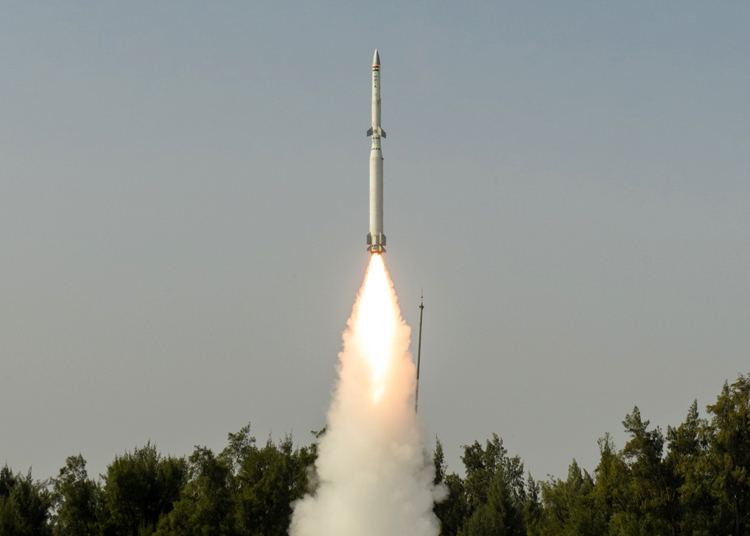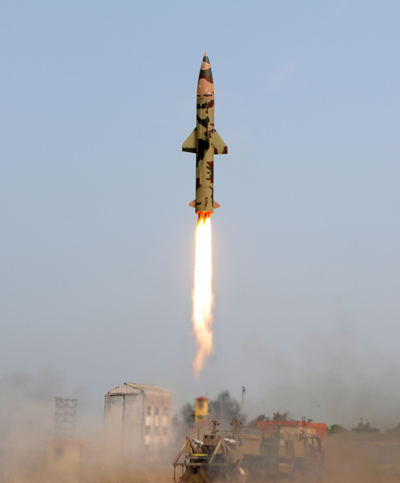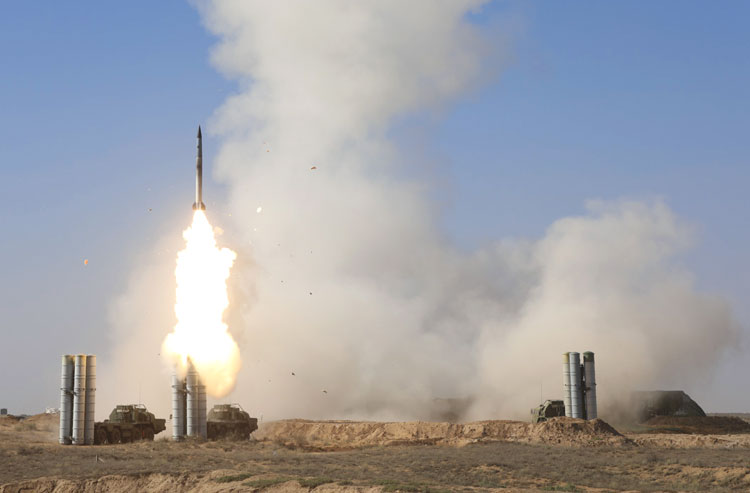INDIAN ARMED FORCES CHIEFS ON OUR RELENTLESS AND FOCUSED PUBLISHING EFFORTS

The insightful articles, inspiring narrations and analytical perspectives presented by the Editorial Team, establish an alluring connect with the reader. My compliments and best wishes to SP Guide Publications.

"Over the past 60 years, the growth of SP Guide Publications has mirrored the rising stature of Indian Navy. Its well-researched and informative magazines on Defence and Aerospace sector have served to shape an educated opinion of our military personnel, policy makers and the public alike. I wish SP's Publication team continued success, fair winds and following seas in all future endeavour!"

Since, its inception in 1964, SP Guide Publications has consistently demonstrated commitment to high-quality journalism in the aerospace and defence sectors, earning a well-deserved reputation as Asia's largest media house in this domain. I wish SP Guide Publications continued success in its pursuit of excellence.
- MoD initiates comprehensive review of Defence Acquisition Procedure 2020, pushes for defence reforms
- G7: The Swansong
- Kalinga Connect: South Asia to Polynesia
- Must Credit DRDO for Operation Sindoor, now what is next for defence R&D?
- The layered Air Defence systems that worked superbly, the key element of Operation Sindoor
- Operation Sindoor | Day 2 DGMOs Briefing
- Operation Sindoor: Resolute yet Restrained
New Interceptor Missile for BMD
On November 2, 2022, India successfully tested its new interceptor missile for Phase-II of its indigenous BMD system, which is capable of intercepting incoming long-range nuclear missiles as well as slow-moving aircraft
 |
The Author is Former Director General of Information Systems and A Special Forces Veteran, Indian Army |

India’s BMD programme to counter ballistic missile threat from China and Pakistan was launched in the aftermath of the Kargil Conflict with Pakistan in 1999, testing for which commenced in 2000. It is a double-tiered system consisting of two land and sea-based interceptor missiles:
- The Prithvi Air Defence (PAD) missile for high altitude interception, and;
- The Advanced Air Defence (AAD) Missile for lower altitude interception.
The two-tiered shield is expected to intercept incoming missile launched from 5,000 km away.
Development of Phase-I of the two-tier BMD, which is designed to track and destroy nuclear missiles both inside (Endo) and outside (Exo) the earth's atmosphere at altitudes from 15-25 km to 80-100 km for a higher kill probability involved around 40 public and private companies for developing the systems. The PAD was tested in November 2006 and it was then reported that India having successfully developed a BMD system, became the fourth country in the world after the US, Russia and Israel. The system has undergone several tests since then but is yet to be officially commissioned.
According to sources, the government has not sanctioned full-scale operational deployment of PAD at any vital location. The reason for this, according to unnamed sources, is attributed to the high costs involved. Another speculation is that it may provoke Pakistan to go in for a larger nuclear arsenal and countermeasures to defeat our BMD system; but Pakistan already has a bigger nuclear arsenal than India and China is expanding its nuclear missile deployments full throttle.
The government has not sanctioned full-scale operational deployment of Prithvi Air Defence (PAD) at any vital location. The reason for this is attributed to the high costs involved

The DRDO continues to develop requisite technologies for a full-fledged BMD system. As per the original plan, Phase-I of the BMD system, with interceptors flying at 4.5 Mach supersonic speeds to intercept enemy missiles, was meant to tackle hostile missiles with a 2,000-km strike range. The Phase-II, in turn, is supposed to take on the 5,000-km range class of missiles. Initial testing for the BMD Phase II (AAD) had begun in 2007.
On November 2, 2022, India successfully tested its new interceptor missile for Phase-II of its indigenous BMD system, which is capable of intercepting incoming long-range nuclear missiles as well as slow-moving aircraft. The new interceptor missile (AD-1) was tested against an electronic target from the A.P.J. Abdul Kalam Island off the Odisha coast with elements of the BMD system placed at different geographical locations.
Defence Minister Rajnath Singh has said that AD-1 “is a unique type of interceptor with advanced technologies available with only a very few nations in the world”, while expressing confidence that it will further strengthen the country’s BMD capability and take it to the next level. Concurrently, DRDO Chairman Samir V. Kamat, said the AD-1 interceptor will provide “great operational flexibility to the users and has the capability to engage many different types of targets”.
Propelled by a two-stage solid motor, the AD-1 is equipped with indigenously-developed advanced control systems, navigation and guidance algorithms to precisely guide the vehicle to the target. A statement by the Ministry of Defence (MoD) read, “The AD-1 is a long-range interceptor missile designed for both low exo-atmospheric and endo-atmospheric interception of long-range ballistic missiles as well as aircraft (like AEW&C or airborne warning and control systems).”
India has begun inducting the Russian S-400 Triumf surface-to-air missile systems that can detect, track and destroy incoming strategic bombers, jets, spy planes, drones and even some intermediate-range ballistic missiles
As per media reports that emerged in January 2020, the first phase of BMD programme was complete but is awaiting government approval. The report also said that missile shield around the “national capital” itself will take three to four years time for installation after the government approval. There is no indication of the government according this approval in the near future and even if so, what areas will it cover other than the national capital?

India has begun inducting the Russian S-400 Triumf surface-to-air missile systems that can detect, track and destroy incoming strategic bombers, jets, spy planes, drones and even some intermediate-range ballistic missiles. However, what parts of India these systems would cover or leave uncovered remains ambiguous.
There is no doubt that the US, Russia, India, France, Israel, Italy, UK, China and Iran have all developed BMD systems, but in our case, deployment of even PAD to provide effective cover to important locations appears many years away. The implications for this can hardly be ignored given the mounting threats to our national security. Strategic developments in the Indo-Pacific with the US hell bent on engaging China in combat through another country (like using Ukraine against Russia) makes it even more important.
Strategic developments in the Indo-Pacific with the US hell bent on engaging China in combat through another country (like using Ukraine against Russia) makes the deployment of BMD systems even more important
It is pretty evident that presently we do not have requisite BMD cover and any amount of rhetoric cannot cover this up. A holistic analysis is needed encompassing the following:
- Immediate, mid-term and long-term missile threats taking into account designs of third-term Chinese President Xi Jinping on India and Western intent to undertake operations against China by proxy.
- Expenditure on PAD and successive tests, what would it take fully deploy Phase I of the BMD, in what timeframe this deployment can be completed (covering threats emanating from up to 2000 km only) and how much of India would it cover?
- A similar appreciation is required for BMD Phase II also.
- Efficacy of our BMD shield in backdrop of the Ukraine Conflict wherein Western systems provided to Ukraine are not very effective against Russian hypersonic missile systems, and China’s hypersonic prowess.
- How effective would our BMD shield be against the Chinese concept of “swarm” attacks?
The mounting threat in the immediate and part mid-term need to be weighed against the pace of indigenisation and the time taken for actual fielding of these systems in required numbers. ‘Make in India’ is good and percentage of indigenous components do get mentioned but within that percentage what are the critical items is what is important. The bottom line is that in order to get an effective BMD shield, we may have to continue with a mix of imports, indigenous and ‘Make in India’; which maybe the only way to address this criticality.





